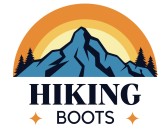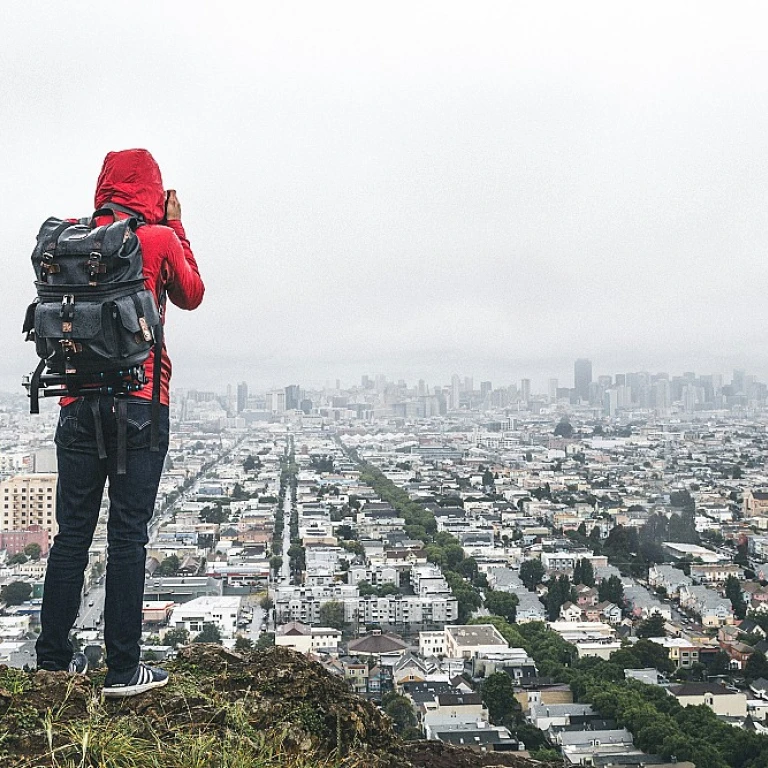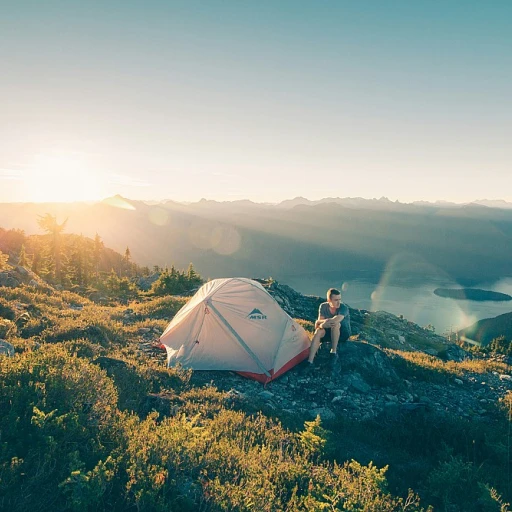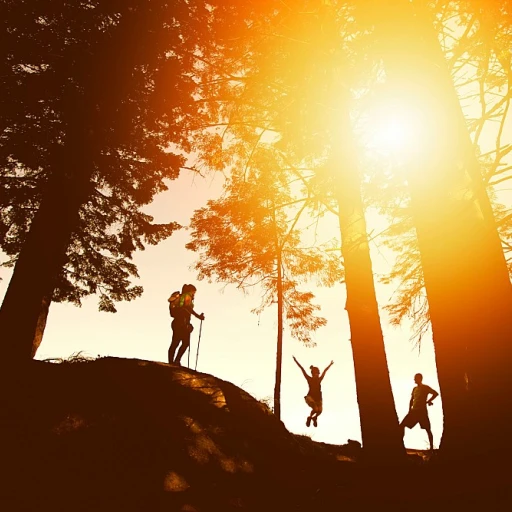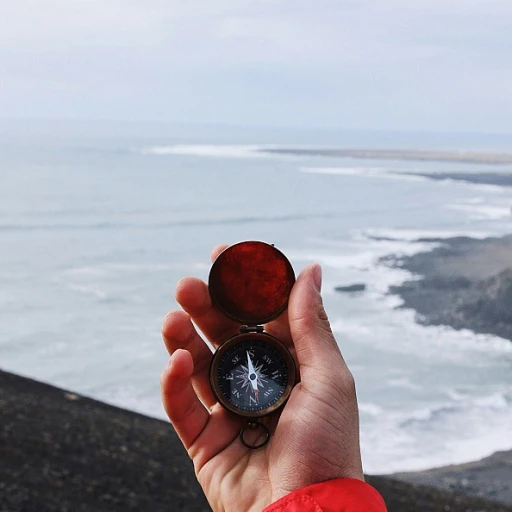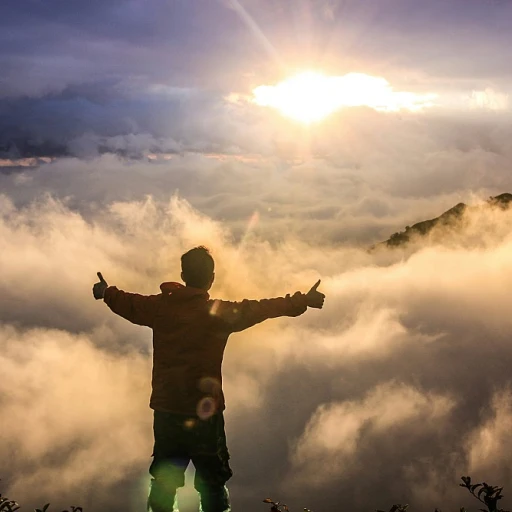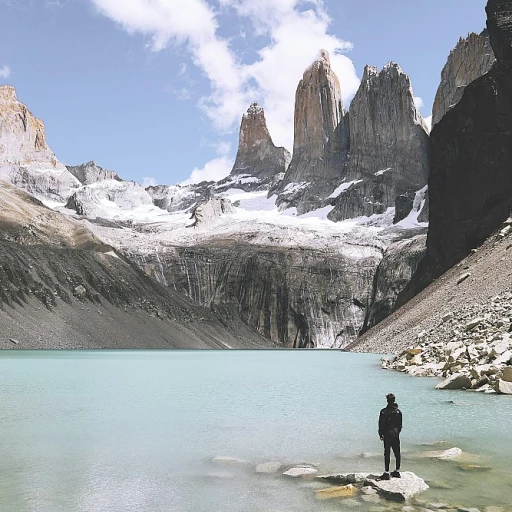Discovering patagonia: An introduction to the region's geography
Introduction to patagonia's geography and stunning landscapes
Welcome to Patagonia, the breathtaking region that sprawls across southern Argentina and Chile. Known for its rugged terrain, this vast area is a dream destination for adventurers and nature lovers. From the towering Andes mountains to the sprawling plains, Patagonia offers diverse landscapes that make it a prime spot for trekking.
The unique topography
Patagonia is home to some of the most diverse and awe-inspiring terrains on the planet. The Andes mountains dominate the western side, while the eastern regions feature arid steppes. The area’s geographical markers include the famous Torres del Paine, Los Glaciares, and the dramatic Perito Moreno Glacier. The southernmost point, Tierra del Fuego, often referred to as the 'end of the world,' showcases Patagonia's untamed beauty.
A hub for trekkers
Trekkers from all around the globe flock to Patagonia for its extraordinary trails and the chance to witness untouched nature. One of the most sought-after paths is the W Trek in Torres del Paine national park, renowned for its jaw-dropping vistas and challenging routes. Whether you're tackling the ice fields of Perito Moreno or exploring the Carretera Austral in Chile, Patagonia offers a wealth of options for all skill levels.
Climate and best time to visit
Patagonia’s climate varies significantly across its vast regions. Generally, the best time to visit is during the southern hemisphere summer, from November to March. This period offers milder temperatures and longer daylight hours, perfect for extended treks. Be prepared for swiftly changing weather conditions, particularly in Torres del Paine and Tierra del Fuego.
Mixed cultures and vibrant history
The Patagonian region is not just about scenic beauty; it's also rich in history and culture. Indigenous tribes such as the Mapuche, Tehuelche, and Yamana have called this region home for centuries. European explorers like Ferdinand Magellan and Charles Darwin also left their mark. This mix of cultures adds a unique flavor to the trekking experience, allowing visitors to step into a land steeped in tradition and history.
From the glaciers of Patagonia Argentina to the volcanic peaks of Chilean Patagonia, this region promises an adventure of a lifetime. As you plan your journey, keep an eye out for our other guides on specific must-see attractions and expert travel tips.
Torres del paine national park: The crown jewel of trekking routes
Torres del paine: where nature whispers adventure
If you're passionate about trekking, torres del paine national park in Patagonia is likely on your radar. Nestled in the southern Chilian patagonia, this park is famed for its spellbinding beauty and challenging trails. Experts such as Rick Stollmeyer, co-founder of Patagonia trekking company World Expeditions, often call it the 'crown jewel' of trekking routes in South America.
The park spans over 1,814 square kilometers and features an array of landscapes from glacial lakes to towering mountain peaks. According to the CONAF, the Chilean national forest service, the park drew over 252,000 visitors in 2019, a record high. Most of them came to experience the acclaimed 'W' trek, a route capturing the essence of what torres del paine has to offer.
The allure of the 'W' trek
This trek covers around 80 kilometers and takes approximately four to six days to complete. What makes it interesting? It’s the breathtaking blend of scenery: cerulean-blue lakes, piercing granite towers, and lush forests. Hikers can also spot diverse wildlife, from guanacos grazing on the plains to Andean condors soaring at dizzying heights.
Marta Andrade, a local guide with over 15 years of experience, shared her thoughts: 'The ‘W’ trek isn't just a trail, it’s a journey through some of the most pristine parts of our planet. Every turn offers a new vista thats worth capturing.'
The lesser-known 'O' circuit
For those who crave extended adventure, the 'O' circuit offers an option that loops around the entire Paine Massif. This 130-kilometer route typically demands eight to 11 days of trekking, but rewards hikers with unparalleled views of the Southern Patagonian Ice Field and backdoor access to remote landscapes few ever see.
Best time to go and visitor tips
The best time to visit the park is from November to April, the region's summer months. Temperatures range between 5-18°C (41-64°F). However, it's wise to be prepared for sudden weather changes. Strong winds and quick shifts in weather are hallmarks of Patagonia's climate.
In a study by the Adventure Travel Trade Association, approximately 42% of first-time visitors underestimated the challenging weather conditions in torres del paine. So, pack wisely: layers, waterproof gear, and sturdy hiking boots are essential for a safe and enjoyable trek.
Perito moreno glacier: Trekking on ice
A colossal natural wonder in patagonia
The Perito Moreno Glacier isn't just a highlight of top hikes in Patagonia; it's a testament to the awe-inspiring power of nature itself. Stretching over 250 square kilometers, it forms part of Los Glaciares National Park in Argentine Patagonia, known for its unique, dynamic ice formations that relentlessly draw adventurers from around the globe. Data from the park shows that roughly 150,000 tourists visit this icy spectacle each year.
Trekking on ice: an experience like no other
Embarking on a trek over the glacier itself is an endeavor few forget. The ice is constantly moving, showcasing crevasses, ice caves, and brilliant blue hues, which are particularly striking against the backdrop of the Andes. Studies by the University of Buenos Aires reveal that this glacier is one of the few in the world maintaining long-term equilibrium, neither advancing nor retreating significantly, adding an ever-changing element to the trek.
Expert insights and safety measures
Guides, like Pablo Ruiz from Calafate Mountain Guides, emphasize the importance of preparation and respect for the glacier's unpredictable conditions. 'Always go with a knowledgeable guide, wear proper gear, and be mindful of the weather,' Pablo advises. Local services provide crampons and other necessary equipment to ensure trekkers' safety across this icy terrain.
Memorable encounters
Marie from France recounts her experience: 'Trekking on Perito Moreno was more than I could have imagined. The crunch of ice beneath my boots and the breathtaking vistas—an unforgettable adventure!' Her sentiments mirror those of many who journey across this frozen marvel.
Environmental considerations
The popularity of the glacier trek brings along the necessity for sustainable tourism practices, highlighted in conservation reports by local environmental groups. Visitors are encouraged to minimize waste, stay on marked paths, and utilize local eco-friendly services to preserve this spectacular yet fragile environment.
Exploring the Perito Moreno Glacier is a must for anyone trekking through Patagonia. Don't miss this iconic experience on your next adventure in the southern reaches of South America. And if you're looking for more high-altitude excitement, check out our guide to exploring Longs Peak.
Venturing into tierra del fuego: The end of the world
Uncovering tierra del fuego: a trekkers' hidden paradise
Imagine wandering through a place so remote, it's often called the “end of the world.” Welcome to Tierra del Fuego, an archipelago off the southernmost tip of South America, shared by Argentina and Chile. Tierra del Fuego is not just a geographical wonder; it’s a trekkers' dream, offering a wide variety of terrains and sceneries that make every step an adventure.
The allure of ushuaia
The Argentinian hub of Ushuaia acts as the gateway to this cold, intriguing paradise. Known as the southernmost city in the world, Ushuaia offers breathtaking views, countless trekking options, and the chance to explore the Andes from a unique angle. According to La Nacion, nearly 65% of trekkers who visit Patagonia consider trekking in Tierra del Fuego as the pinnacle of their journey.
Trekking in tierra del fuego national park
Tierra del Fuego National Park covers a rich, diverse landscape where lush forests meet rugged mountains and serene lakes. This southernmost national park offers various trails suitable for different skill levels. Laguna Esmeralda and Sendero Hito XXIV are popular trekking routes that allow you to experience the park's raw beauty. According to the Buenos Aires Government, more than 35,000 people visit Tierra del Fuego National Park annually, drawn mostly by its captivating natural features.
Experts' take on tierra del fuego trekking
Eminent trekking guides and experts often recommend visiting between November and March for the best experience, as the harsh winters can make some areas inaccessible. According to Patagonian trekking expert Victor Luna, “The trek to Cerro Guanaco is a physical challenge but offers one of the most stunning panoramic views in the region.”
A little controversy?
While Tierra del Fuego is largely celebrated, it hasn't been without its issues. Recent development projects have raised concerns among environmentalists. According to a report by Clarin, the development plans threaten to disrupt the delicate balance of the ecosystem here, much like the controversies surrounding some development projects in Torres del Paine National Park.
Practical tips for trekking in tierra del fuego
Preparation is key when trekking in Tierra del Fuego. The weather is unpredictable, so pack layers and waterproof gear. Local guides are recommended for the best experience, ensuring you traverse safely while maximizing your adventure. Always respect the natural environment, leaving no trace behind to help preserve this unique part of the planet.
The chilean lake district: Between mountains and waters
Lake district's hidden gems
The Chilean Lake District is a region that leaves trekkers in awe, nestled between the Andes mountains and the vast Pacific Ocean. This picturesque area spans over 600 miles, boasting numerous lakes, volcanic peaks, and lush forests. It's truly a playground for nature lovers and adventure seekers alike. The district is split, with Northern and Southern regions, each offering unique trails and breathtaking viewpoints.
The allure of northern chilean patagonia
In the northern part of the Chilean Lake District, you're greeted by the stunning Osorno Volcano, often compared to Japan's Mount Fuji due to its perfect conical shape. Here, trails meander through verdant forests and up to the volcanic peaks, offering trekkers spectacular panoramic vistas. The Vicente Pérez Rosales National Park is another gem in the north, famous for its Petrohué waterfalls and the turquoise waters of Lake Todos Los Santos. Source: TripAdvisor
A journey through the southern lakes
Southern Chilean Patagonia is equally captivating with its own distinct charm. The Alerce Andino National Park is a must-visit, where ancient alerce trees tower above, creating an almost mystical atmosphere. Trekkers can explore winding trails that lead to the serene Sargazo and Sargassum Lakes, providing moments of peace and tranquility away from the bustle of daily life. Source: Lonely Planet
Embracing patagonia argentina chile
Crossing over to Argentine Patagonia, the Patagonian Lake District continues to dazzle. Bariloche, known as the 'Switzerland of South America', is set along the shores of Lake Nahuel Huapi. This region is famous for its mix of Swiss-style architecture and stunning natural landscapes. The trekking routes here are diverse, from easy walks along the lake to challenging hikes like the ascent to Cerro Catedral, one of the highest peaks in the area. Source: Travel and Leisure
People, culture, and cuisine
The appeal of the Lake District goes beyond its physical beauty. The local culture, influenced by German and Swiss immigrants, adds a unique flavor to the experience. You can find charming villages with wooden chalets, sample traditional dishes like kuchen (a German-style cake), and meet the warm and welcoming local people who call this region home. This blend of cultural elements creates a rich tapestry that enhances your trekking adventure. Source: National Geographic
Best times to visit and tips
The best time to visit the Lake District is during the summer months from December to February, when the weather is warm and dry. However, spring (September to November) and autumn (March to May) also offer pleasant conditions and fewer crowds. To fully enjoy your trip, pack layers for the variable weather, bring sturdy hiking boots, and make sure to carry a map and plenty of water. Whether you’re an experienced hiker or a casual walker, the Lake District is sure to provide memorable experiences.
Patagonia argentina: Untamed wilderness
Wild landscapes and diverse wildlife of patagonia argentina
Patagonia argentina is a vast region teeming with raw, untamed beauty. Stretching across the southern part of Argentina, this area is defined by its dramatic landscapes, remote territories, and an abundance of wildlife. Some of the most breathtaking destinations include Los Glaciares National Park and the Perito Moreno Glacier—these sites offer vistas that are simply awe-inspiring.
Los Glaciares National Park: A trekker's paradise
Established in 1937, Los Glaciares National Park is a UNESCO World Heritage Site. Covering approximately 7,269 square kilometers, it harbors some of the largest ice cap outside Antarctica and Greenland. According to a study by the National Scientific and Technical Research Council (CONICET), the park hosts about 356 glaciers, with Perito Moreno being one of the most famous.
Hiking trails such as Laguna de los Tres and the Huemul Circuit attract thousands of trekkers annually, providing stunning views of Mount Fitz Roy and diverse flora and fauna, including condors, guanacos, and even pumas.
Enchanting beauty of the Lake District
Further north, the Argentine Lake District offers an entirely different, but equally mesmerizing experience. Nestled within the Andes, this area features picturesque lakes, lush forests, and quaint, Alpine-style towns like San Carlos de Bariloche.
Bariloche, in particular, is a popular base for those looking to explore Nahuel Huapi National Park. Founded in 1934, this park is Argentina's oldest and encompasses nearly 7,000 square kilometers. An interesting trend, noted in a report by the Argentine Secretary of Tourism, is that eco-friendly tourism initiatives are increasingly attracting tourists looking to reduce their carbon footprint while enjoying the natural splendor of these destinations.
The trek to Laguna Torre
One of the most sought-after hikes in patagonia argentina is the trek to Laguna Torre. Located in the northern part of Los Glaciares National Park, this trail leads adventurers to a glacial lake that offers an unobstructed view of Cerro Torre, one of the most iconic peaks in the region. According to Yeti Trails, the trek is moderately difficult, spanning around 20 kilometers round trip and typically taking one full day to complete.
Cultural richness and local traditions
Apart from its natural beauty, patagonia argentina also offers a rich cultural experience. The region is home to a blend of European heritage and indigenous traditions, particularly from the Mapuche people. Local museums and cultural centers, such as the Patagonia Museum in Bariloche, offer insights into the history and lifestyle of the people who have called this rugged land home for centuries.
Challenges and considerations for trekkers
While the patagonian wilderness offers surreal beauty and adventure, it also poses certain challenges. Trekkers need to be prepared for rapidly changing weather conditions, rugged terrains, and limited access to amenities. An Argentine Meteorological Service report highlights that trekkers often face extreme winds and cold temperatures, even in the summer months. Proper preparation and respect for the environment are essential.
Environmental impact: Reducing your carbon footprint while trekking
Understanding your environmental impact while trekking patagonia
Preserving the pristine beauty of patagonia, which stretches across southern Chile and Argentina, demands conscious efforts. According to a report by the Global Footprint Network, the average global citizen’s carbon footprint is around 4.8 metric tons per year. Trekking in Torres del Paine National Park or hiking on the Perito Moreno Glacier inevitably adds to that footprint, but there are ways to mitigate it.
Emphasizing sustainable trekking practices
The concept of sustainability is critical when exploring natural wonders like tierra del fuego or the chilean lake district. For instance, the Leave No Trace initiative emphasizes principles that help minimize your environmental impact. Ensure you're carrying out all waste, respect wildlife, and stick to designated trails to prevent soil erosion.
Choosing eco-friendly accommodations and transport
The chilean patagonia and argentine patagonia regions are dotted with eco-friendly lodges and campsites. Research from the International Journal of Hospitality Management shows that eco-friendly accommodations are becoming more popular among trekkers, with an increasing number of hosts implementing renewable energy sources and waste-reduction practices. Opt for local public transportation or bike rentals to reduce carbon emissions during your trip.
Local initiatives making a difference
Organizations like The Patagonia Project are dedicated to conserving the region's natural beauty. They focus on forest conservation, wildlife protection, and promoting eco-tourism. In the torres del paine national park, for instance, local guides are trained in sustainable practices to ensure that trekking routes remain unspoiled for future generations.
Tips from sustainability experts
Dr. Erika Blanco, a sustainability expert at the University of Buenos Aires, suggests, "Travelers can substantially cut their carbon footprint by supporting local economies and choosing sustainable tour operators. Small steps like carrying reusable water bottles and minimizing single-use plastics go a long way in preserving Patagonia for future adventurers." Consider these practices when planning your next trek in the breathtaking southern Argentine Patagonia or southern Chilean Patagonia.
Reducing your carbon footprint: tangible actions
Balance your trekking adventures with a commitment to sustainability. Calculate your trip's carbon emissions using online calculators and consider offsetting them by donating to reforestation projects in the andes mountains. Engaging in clean-up drives during your visits to areas like puerto natales and punta arenas can also help maintain the pristine beauty of patagonia.
Travel tips: Planning your patagonia trekking adventure
Packing for all seasons
Patagonia's weather conditions can be unpredictable. The region's diverse landscapes—which range from the Andean mountains to coastal fjords—mean you need to be prepared for sun, rain, wind, and even snow, often in a single day. Layers are your best friends. Start with a moisture-wicking base layer, add insulating layers, and wrap up with a waterproof outer shell. And don't forget a good pair of hiking boots.
Currency and budget
While planning your trek, consider your budget. Patagonia is not the cheapest destination, but it's worth it. In Argentina, the currency used is the Argentine Peso (ARS), and in Chile, it's the Chilean Peso (CLP). Keep an eye on the exchange rates and prepare to carry both currencies if you plan on crossing the border. The daily cost for trekking can vary, but on average, budget around USD 50-100 per day for food, accommodation, and additional expenses.
Booking accommodations
From cozy refugios in Torres del Paine National Park to charming hostels in Puerto Natales, accommodation options are plentiful but can fill up quickly, especially during peak seasons. Booking in advance is essential if you want to secure your spot, particularly if you’re eyeing popular trekking routes or specific accommodations within the park. For a more immersive experience, consider staying in eco-friendly lodges to complement your adventure.
Permit and entry fees
An important detail to remember is that many of Patagonia's national parks, including Torres del Paine, require permits and entry fees. These can be arranged online or at the park entrance. Always carry your passport as identification when obtaining these permits. In Chile, expect to pay around CLP 25,000 (approx. USD 33) for entry into Torres del Paine. In Argentina, El Calafate is the gateway to Los Glaciares National Park, where entry fees are around ARS 800 (approx. USD 10).
Local customs and tips
When traveling in Patagonia, you'll encounter friendly locals who appreciate respect for their customs and environment. Learn a few Spanish phrases to enhance your interactions. Tipping is customary in restaurants, usually around 10%. Also, if you join guided treks, tipping your guides is appreciated. For extra tips and insights on the best trails and local etiquette, consider consulting advice bespoke service providers who specialize in Patagonia trekking adventures.
Staying safe
Safety should be a priority on your trekking adventure. Weather changes can be drastic, so always check forecasts and be prepared. Follow marked trails, carry a map, compass, and GPS, and never underestimate the terrain. In the more remote areas, mobile phone coverage may be limited. Sharing your itinerary with someone back home and having a backup plan is wise. For solo travelers, joining a group trek can enhance both safety and your experience.
Emphasizing sustainability
Finally, keep in mind the environmental impact of your trip. Patagonia's pristine beauty is fragile, and reducing your carbon footprint is essential. Opt for eco-friendly accommodations, minimize waste, and respect local wildlife and flora. When hiking, stick to the trails and follow Leave No Trace principles to help preserve the natural wonders for future generations.
